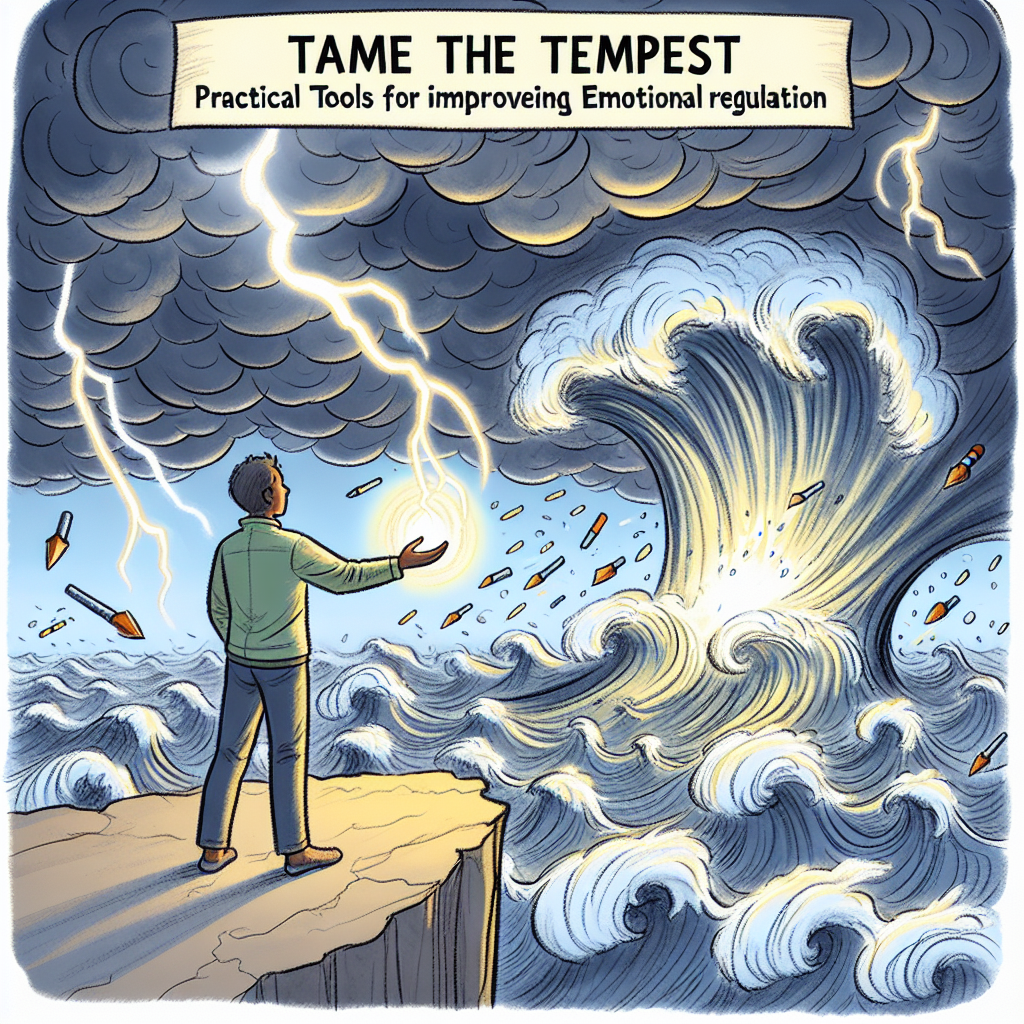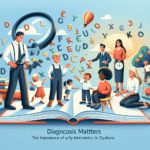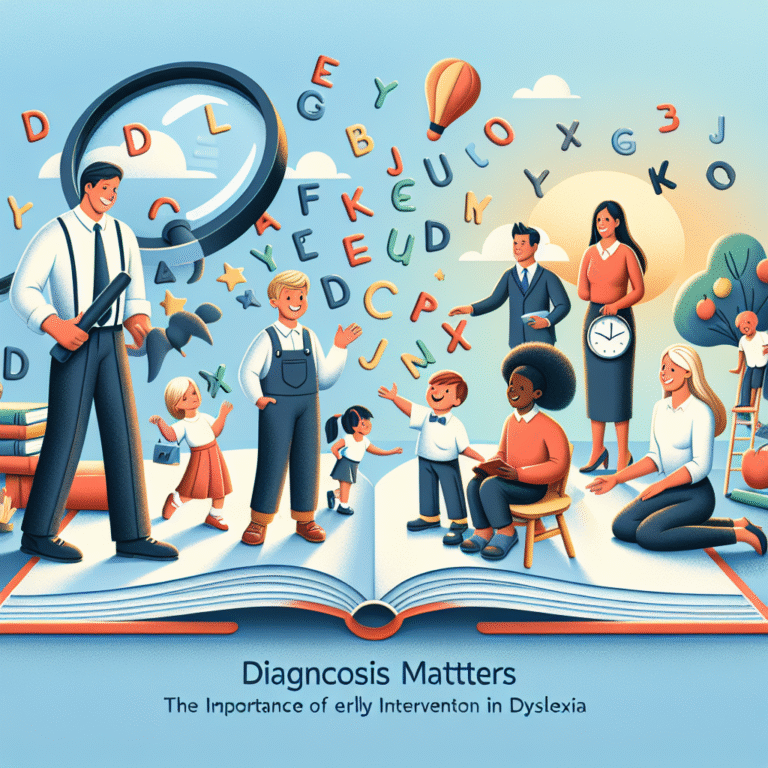
Introduction
In the tumultuous seas of life, our emotions can often feel like a tempest—unpredictable, overwhelming, and sometimes, destructive. Whether it’s the stress of daily responsibilities, unexpected life changes, or deep-rooted fears, managing our emotions can be one of life’s biggest challenges. But what if you could learn to not just survive the storm, but tame it? Tame the Tempest: Practical Tools for Improving Emotional Regulation offers you not just a lifeline, but a compass to navigate through your emotional landscape.
Learning effective emotional regulation is essential; it can improve your relationships, enhance your decision-making abilities, and contribute to your overall mental well-being. In this article, we will explore practical tools and strategies for improving emotional regulation, providing real-world examples and actionable insights that can transform your emotional health.
Understanding Emotional Regulation
What Is Emotional Regulation?
Emotional regulation involves processes that influence which emotions you have, when you have them, and how you experience and express those emotions. It comprises both conscious efforts to manage your emotional state and automatic, unconscious processes.
Why Is Emotional Regulation Important?
Feeling emotions is an inherent part of being human. However, how we manage those feelings significantly impacts our mental health and relationships. Poor emotional regulation can lead to increased anxiety, depression, and relationship breakups. Taming the tempest of your emotions is not merely a desirable skill; it’s essential for a well-rounded, fulfilling life.
Practical Tools for Taming the Tempest
1. Mindfulness Meditation
What It Is
Mindfulness meditation focuses your awareness on the present moment, making it a powerful tool for emotional regulation. By fostering a non-judgmental awareness of your thoughts and feelings, it allows you to observe emotions without acting on them.
How to Implement
Start with guided mindfulness exercises that focus on breath awareness. Platforms like Headspace or Calm offer excellent resources.
Case Study: Sarah’s Transformation
Sarah, a marketing executive, found herself overwhelmed with stress and anxiety. By practicing mindfulness meditation for just 10 minutes each morning, she reported feeling more centered and less reactive in her work environment. This newfound emotional stability allowed her to approach challenges with a clearer mindset.
2. Cognitive Behavioral Therapy (CBT)
What It Is
CBT is a psychological treatment that helps individuals recognize and change negative thought patterns. It’s highly effective for improving emotional regulation by replacing harmful thoughts with healthier ones.
How to Implement
Consider working with a trained therapist or utilizing self-help books and apps to guide you through CBT exercises.
Case Study: Tom’s Breakthrough
Tom struggled with self-esteem issues that led to episodes of anger. Utilizing CBT tools, he learned to challenge his automatic thoughts critically. This method helped him reframe situations and respond more calmly. As a result, he reported improved interactions with family members and a reduction in daily anger.
3. Journaling
What It Is
Journaling provides a safe outlet for expressing emotions and reflecting on experiences. Writing about your feelings can help you understand them better and recognize patterns in your emotional responses.
How to Implement
Try expressive journaling, where you write freely for a set time about whatever comes to mind, or use prompts to provoke deep reflection.
Case Study: Emma’s Clarity
Emma, a college student, faced anxiety surrounding her future. By journaling about her fears and hopes, she gained insights into what truly mattered to her. This process helped her make informed decisions about her career path, reducing her anxiety greatly.
4. Deep Breathing Exercises
What It Is
Deep breathing exercises can be an instant tool for emotional regulation. They help to calm the nervous system, providing immediate relief in stressful situations.
How to Implement
Practice the 4-7-8 technique: inhale for 4 seconds, hold for 7 seconds, and exhale slowly for 8 seconds.
Case Study: Mark’s Emergency Strategy
Mark, a teacher, faced daily stress from managing a classroom of energetic students. By incorporating deep breathing exercises into his classroom routine, he found he could maintain his composure and create a more positive learning environment.
5. Emotional Awareness Workshops
What It Is
Workshops focusing on emotional awareness help individuals identify and articulate their feelings, enabling better management of those emotions.
How to Implement
Participate in local community workshops or online courses that cover emotional intelligence and regulation.
Case Study: Lisa’s Empowerment
Lisa, a nurse, often suppressed her emotions due to the stress of her job. After attending a workshop, she learned to recognize and express her feelings appropriately. This practice not only benefited her emotional well-being but improved her interactions with patients and colleagues.
The Science Behind Emotional Regulation
Neurological Insights
Research shows that regions of the brain, such as the prefrontal cortex, play a crucial role in emotional regulation. Engaging in practices like mindfulness and CBT can promote neural pathways, aiding emotional control.
Emotional Regulation and Mental Health
Studies have found a strong correlation between effective emotional regulation and lower rates of anxiety and depression. By incorporating the strategies mentioned, individuals can significantly improve their mental wellness.
Visualizing Emotional Regulation Tools
Summary Table of Tools for Emotional Regulation
| Tool | Benefits | How to Implement |
|---|---|---|
| Mindfulness Meditation | Reduces anxiety, enhances focus | 10 minutes daily |
| Cognitive Behavioral Therapy | Changes negative thoughts | Work with a therapist or self-help |
| Journaling | Promotes self-reflection | Write freely or use prompts |
| Deep Breathing Exercises | Instant stress relief | Practice 4-7-8 breathing |
| Emotional Awareness Workshops | Builds emotional intelligence | Attend local or online sessions |
Conclusion
Taming the tempest of your emotions is not just about survival; it’s about thriving. Tame the Tempest: Practical Tools for Improving Emotional Regulation provides you with a suite of actionable tools for understanding and managing your emotions effectively.
Embrace the strategies outlined in this article—from mindfulness to journaling—and watch as your emotional landscape transforms. Remember, emotional regulation is a journey, not a destination. Each step you take brings you closer to a calm and centered life, where you can face challenges not as a victim of your emotions, but as a master of your emotional destiny.
FAQs
1. What is emotional regulation?
Emotional regulation refers to our ability to manage and respond to our emotional experiences effectively.
2. How can I practice emotional regulation daily?
Incorporate mindfulness meditation, journaling, or deep breathing exercises into your daily routine.
3. Are there professionals who can help with emotional regulation?
Yes, therapists specializing in CBT can provide personalized strategies to improve emotional regulation.
4. What are the benefits of improved emotional regulation?
Enhanced emotional regulation can lead to better mental health, improved relationships, and more effective decision-making.
5. Can emotional regulation be learned at any age?
Absolutely! Emotional regulation skills can be developed and improved at any stage of life.
By equipping yourself with practical tools, you can embark on this rewarding journey toward emotional clarity. Tame the tempest within, and find the calm amid the whirlwinds of life.












